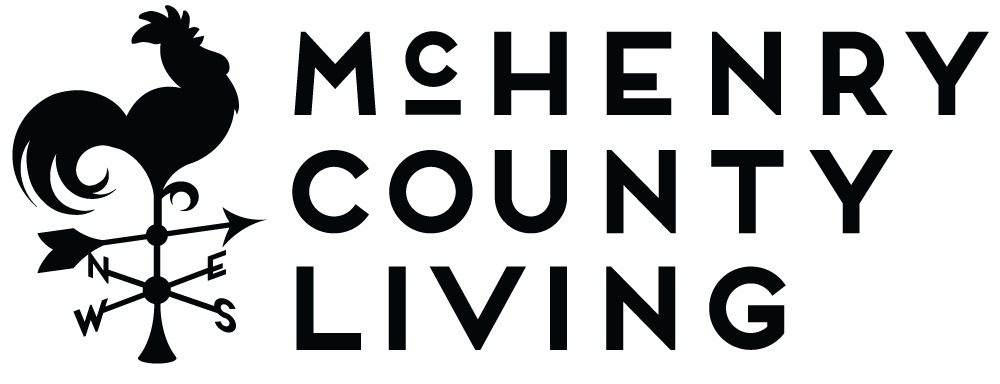Horace Capron: Iconic Local Farmer
FROM A FARMER TO A COLONEL IN THE CIVIL WAR TO A TRAILBLAZER OF JAPAN’S BEER INDUSTRY, HORACE CAPRON LED A DYNAMIC LIFE.
It was called simply, The Mansion. And of its builder, Horace Capron, few can claim to have led a more eventful and productive life. This McHenry County farmer – after revolutionizing America’s agricultural industry – became the oldest cavalry officer in the Union Army during the Civil War as adjutant to General Ulysses S. Grant. He even has a life-sized statue of himself standing to this day in Sapporo, Japan, as Capron is credited by many as a father to that nation’s beer industry.
Love at First Sight
“It appeared to me, on first sight, in the pleasant month of June, to be a paradise … seven hundred acres of as beautiful country as ever was seen,” so wrote Capron about his 1850 arrival to McHenry County. “I can never forget the satisfaction I experienced for the first time as I drew on my heavy boots and working suit, and went forth to turn the first furrow across a forty-acre lot of that perfectly virgin soil.”
Capron brought with him many farming improvements, such as progressive cultivation methods and the renovation of worn-out soils, which he had perfected out East and which had earned him numerous spotlights in American Farmer magazine. No doubt his prestige and experience were a great boon to the emerging agricultural community in McHenry County.
He built his stately home two miles outside of Hebron. It was completed in 1854, and recalled by one historian as a “marvelous building for its day” with “multitudinous rooms, high ceilings, large fireplaces, solid mahogany spiral stairway and priceless glass chandeliers.” It featured a square tower from which Capron surveyed his vast farmlands.
The pride of Capron’s farm – so long as these untroubled days remained – was his herd of North Devon cattle. He boasted of them winning first prize at state fairs in Illinois and Wisconsin, and earning top ranking at the 1859 United States Agricultural Fair in Chicago. Soon enough, however, for Capron as for so many of his neighbors and countrymen, this pastoral way of life would come to an abrupt end.
Costs of War
“Whilst I was engaged in my harvest fields,” wrote Capron in his memoir, “… in the peaceful pursuits of a life altogether congenial to my feelings and tastes; one in which I had proposed to pass the remainder of my days … the recruiting Officers came upon me [and my sons] to help fill up the state quota of troops … to put down the great rebellion.”
By the start of 1863 – after Bull Run, Shiloh and Antietam – all notions of a swift and decisive end to the War Between the States were put to rest by both North and South. On January 7 of that year, the Illinois 14th Cavalry was mustered into service in Peoria, with Colonel Horace Capron commissioned to lead it into battle.
He paid a high price for this Civil War service. On the verge of turning 60, Capron became the eldest cavalry officer in the Union Army. His three sons – Horace Jr., Albert and Osmond – all served alongside their father in the 14th. The eldest, Horace Jr., died in battle; the younger two “returned to family with constitution impaired” not only by the “hardships of the battle fields,” Capron wrote, but also “rusted by vile imprisonment.”
After service, Capron returned to agricultural pursuits in McHenry County, entertaining distinguished guests like fellow Illinoisan and future U.S. President, General Ulysses S. Grant, at The Mansion.
Continued Duty
President Andrew Johnson appointed Capron U.S. Commissioner of Agriculture on November 27, 1867. Once again, he left his idyllic McHenry County farm to serve his country. Agriculture at the time accounted for more than 50 percent of the U.S. labor force and nearly 80 percent of the nation’s exports, so this was an important and esteemed position attending to that which Capron considered the “foundation of the country.”
Brigadier General Capron (he received a promotion after the war) served as Commissioner of Agriculture through 1871. Then, approaching the age of 70, he accepted an invitation from the Japanese government to bring American farming methods to the sparsely settled island of Hokkaido. Capron noticed that the soil and climate on that northern Japanese island was friendly to wheat and rye. This led, naturally, to the brewing of beer.
Today, in downtown Sapporo – namesake for Japan’s oldest and No. 1 brewery – a statue of General Horace Capron reigns over Odori Park.
General Capron returned to the U.S. in 1875, retiring in Washington, D.C., while his brothers Newton and John looked over his beloved McHenry County farm. As a younger man, leading a cavalry troop of Maryland Militia, Horace Capron had attended the laying of the cornerstone of the Washington Monument on July 4, 1848. On February 21, 1885 – a frigid winter day – he was a guest of honor at that monument’s long-awaited dedication. The 12-degree weather put General Capron’s frail 81-year-old body into shock, and he died the following day.

